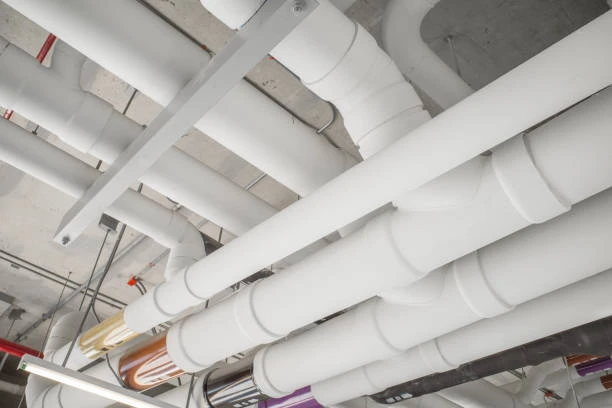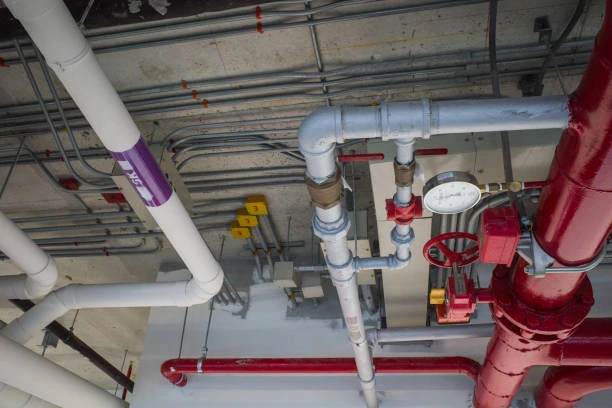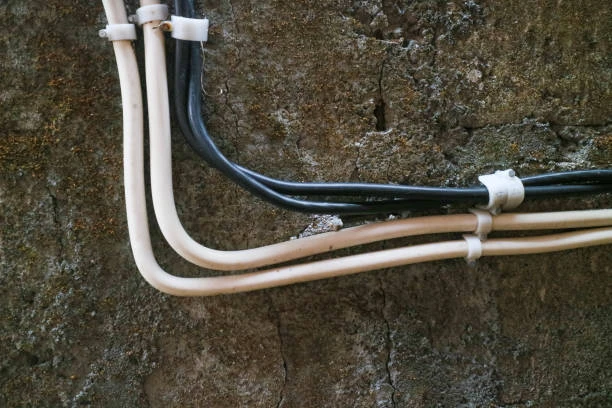Corrosion Resistance of Copper Ball Valves in Marine Engineering
Copper ball valves, including hydraulic control valve, are essential in marine engineering due to their exceptional corrosion resistance, durability, and precise fluid control in harsh saltwater environments. These valves ensure reliable performance in demanding marine applications, from shipbuilding to offshore platforms. In this article, we explore the corrosion-resistant benefits of copper ball valves, their uses in marine engineering, and how to select the best hydraulic control valve for your needs. We also provide a comparison with plastic valves, installation tips, and details about IFAN’s high-quality products that meet international standards.
Frequently Asked Questions About Copper Ball Valves
1. What is a copper ball valve?
A copper ball valve is a shut-off valve with a perforated ball that rotates to control the flow of liquids or gases in a pipeline.
2. Why are hydraulic control valves made of copper used in marine engineering?
Copper hydraulic control valves resist corrosion from saltwater, offer durability, and provide precise control in marine systems.
3. Are all copper ball valves suitable for marine environments?
Not all are marine-grade; choose valves designed for saltwater exposure and high-pressure marine applications.
4. How do I choose a high-quality hydraulic control valve?
Look for pure copper valves with certifications like ISO and manufactured by trusted brands like IFAN.
5. Are copper valves better than plastic valves for marine engineering?
Yes, copper valves excel in corrosion resistance and durability, while plastic valves degrade quickly in saltwater conditions.
Definition and Features of Copper Ball Valves
Copper ball valves consist of a hollow, perforated ball within a copper body that regulates fluid or gas flow. A quarter-turn of the handle opens or closes the valve, allowing quick and precise control. Copper’s natural properties, including superior corrosion resistance and high strength, make these valves ideal for marine engineering, where exposure to saltwater, moisture, and extreme conditions is common. They maintain tight seals and withstand high pressures, ensuring leak-free performance.
Hydraulic control valves within the copper ball valve family are designed for precise flow regulation in hydraulic systems, critical for marine applications like steering or propulsion. Their smooth internal surfaces reduce fluid friction, enhancing efficiency, while copper’s resistance to marine corrosion ensures long-term reliability. Additionally, copper’s ability to endure temperature fluctuations makes these valves suitable for the challenging conditions of marine environments.
Common Uses and Industries for Copper Ball Valves
Copper ball valves, including hydraulic control valves, are widely used in marine engineering due to their corrosion resistance and reliability. Common applications include:
Shipbuilding: Control water, fuel, or hydraulic fluids in ship piping systems for propulsion and cooling.
Offshore Platforms: Regulate fluid flow in oil and gas extraction systems, resisting saltwater corrosion.
Marine HVAC Systems: Manage coolant or water flow in climate control systems on vessels.
Ballast Systems: Control water intake and discharge in ship ballast tanks for stability.
Desalination Plants: Handle seawater in reverse osmosis systems, ensuring corrosion-free operation.
Hydraulic control valves are critical in applications requiring precise fluid management, such as hydraulic actuators or marine cranes. Their ability to withstand harsh marine conditions makes them a preferred choice for engineers seeking durability and safety in maritime operations.
Guide to Selecting Copper Ball Valves
Choosing the right copper ball valve, especially a hydraulic control valve, ensures reliable performance in marine engineering applications. Consider these factors when selecting:
Material Quality: Choose valves made from high-purity copper or marine-grade alloys for maximum corrosion resistance.
Finish and Appearance: A polished copper finish indicates high manufacturing standards and resistance to saltwater wear.
Certifications: Select valves that comply with standards like ISO 15874 or ASTM F2389, and ensure marine-specific certifications.
Pressure and Fluid Compatibility: Verify the valve is rated for the pressures and fluids (e.g., seawater, hydraulic oil) in your system.
Brand Reputation: Trust manufacturers like IFAN, known for reliable and cost-effective valves.
Consult a marine engineer to match the valve’s specifications with your system’s requirements, ensuring compatibility and compliance with maritime regulations.
Installation Tips for Copper Ball Valves
Proper installation of copper ball valves, including hydraulic control valve models, ensures corrosion-resistant performance and prevents leaks in marine systems. Follow these tips for a successful setup:
Verify Compatibility: Confirm the valve suits the pipe material (copper, stainless steel, or PEX) and marine fluid specifications.
Clean Pipes: Remove salt, debris, or corrosion residues from pipes before installation to avoid valve damage.
Use Marine-Grade Sealants: Apply saltwater-resistant thread sealant or Teflon tape to threaded connections for a secure seal.
Align Correctly: Install the valve in the correct orientation, following the manufacturer’s flow direction indicators.
Test for Leaks: After installation, perform a pressure test and inspect for leaks to ensure reliable operation in marine conditions.
Avoid over-tightening the valve during installation to prevent damage to the threads or body, especially in high-pressure marine systems. Regularly inspect valves for signs of wear to maintain corrosion resistance.
Comparison: Copper Valves vs. Plastic Valves
Feature | Copper Valves | Plastic Valves |
|---|---|---|
Durability | High, lasts decades | Moderate, degrades quickly |
Corrosion Resistance | Excellent against saltwater | Poor, unsuitable for marine use |
Pressure Tolerance | Handles high pressure | Suitable for low pressure |
Temperature Tolerance | Withstands extreme temperatures | Limited to moderate temperatures |
Cost | Higher initial cost | Lower initial cost |
Applications | Marine engineering, industrial | Residential, non-corrosive fluids |
Copper valves, particularly hydraulic control valve models, far outperform plastic valves in marine engineering due to their superior corrosion resistance, durability, and ability to handle harsh saltwater environments.
Conclusion
Copper ball valves, including hydraulic control valves, offer exceptional corrosion resistance and reliable fluid control in marine engineering applications. Their durability, precise flow regulation, and ability to withstand saltwater make them ideal for shipbuilding, offshore platforms, and desalination systems. By choosing high-quality valves from trusted manufacturers like IFAN, you ensure safety, efficiency, and long-term performance in marine environments. Whether you’re managing a vessel’s hydraulic system or an offshore rig, copper ball valves deliver the reliability needed for success. Follow the installation tips and select products that meet international standards to optimize your marine system’s performance.
Connect with IFAN
IFAN is a Chinese manufacturer of plastic pipes, fittings, and valves with 30 years of experience. If you are interested in IFAN copper fittings, copper valves, plastic pipes, and fittings, please contact us. IFAN offers you a variety of standard pipes to meet your specific needs. Click below to learn more about IFAN’s wide range of affordable and cost-effective valve products and piping system-related products.
We will reply to your email or fax within 24 hours.
You can call us at any time if there is any question about our production.
For more information,pls visit our webside https://waterpipefitting.com/
Pls Mailto: [email protected]
Whatsapp: +86 15088288323
IFAN Products International Standards
IFAN products strictly adhere to a comprehensive range of international standards, encompassing ISO 15874, EN 15874, ASTM F2389, DIN 8077/8078, GB/T 18742, NBR 15884, ISO 15494, EN ISO 15494, GB/T 19472, NBR 15494, ASTM 2846 (501), DIN 8079/8080 (502), ASTM F441/F441M SCH80 (503), DIN (504), DIN (505), GB/T 18993, AS/NZS 1477, CSA B137.6, NSF/ANSI 14, TIS 17-2532/1131-2535, BS 3505, BS 4346 (801), ASTM D1785 SCH40 (802), ASTM D1785 SCH80 (803), DIN (804), GB (805), GB (806), GB(901), DWV(902), ASTM D2665 (903), along with ASTM D2241, D2665, D2729, and F441/F441M series, ISO 1452, EN ISO 1452, DIN 8061/8062, GB/T 10002, AS/NZS 1477, JIS K6741, CSA B137.3, and other national and industry norms.














Recent Comments